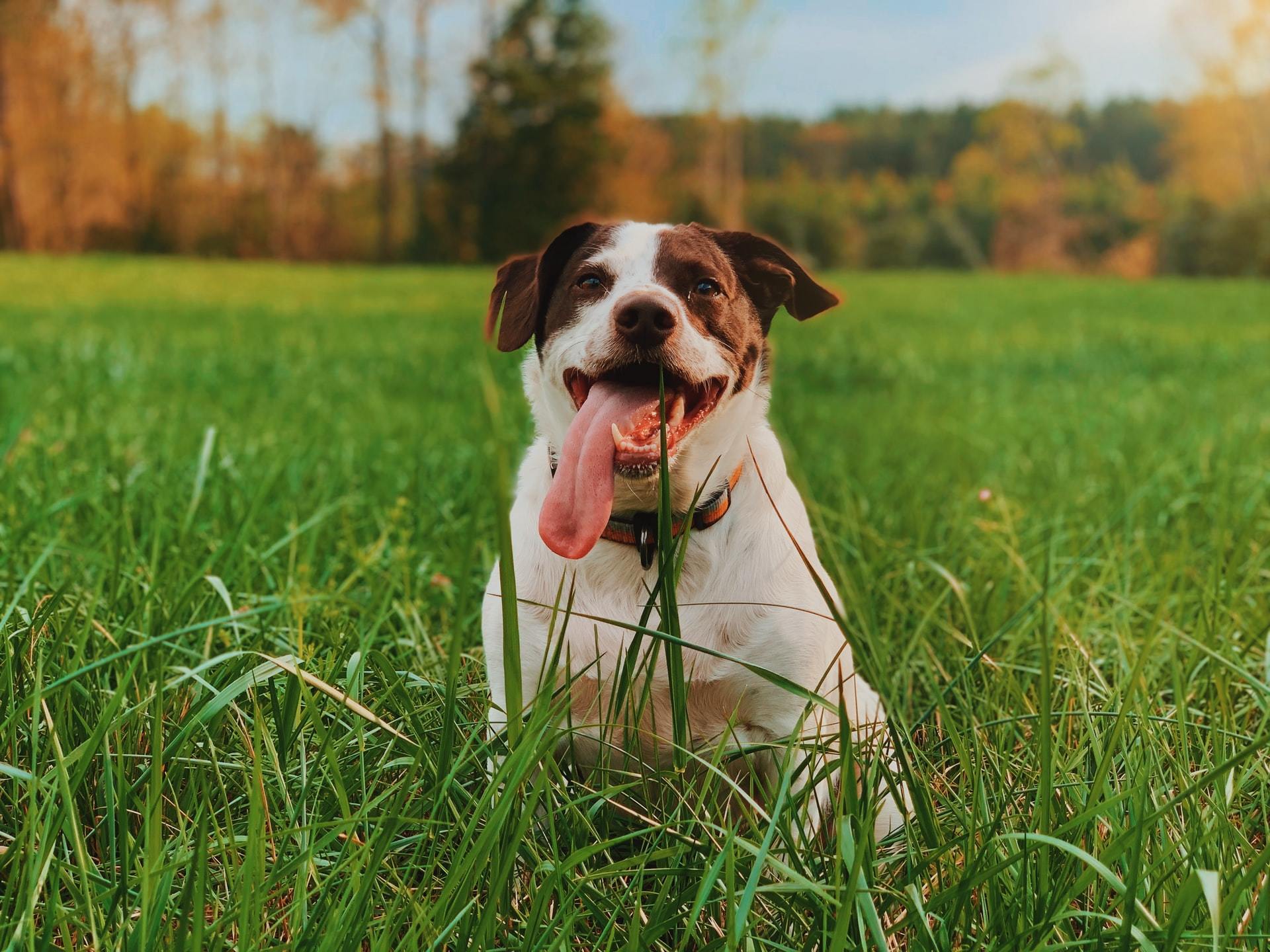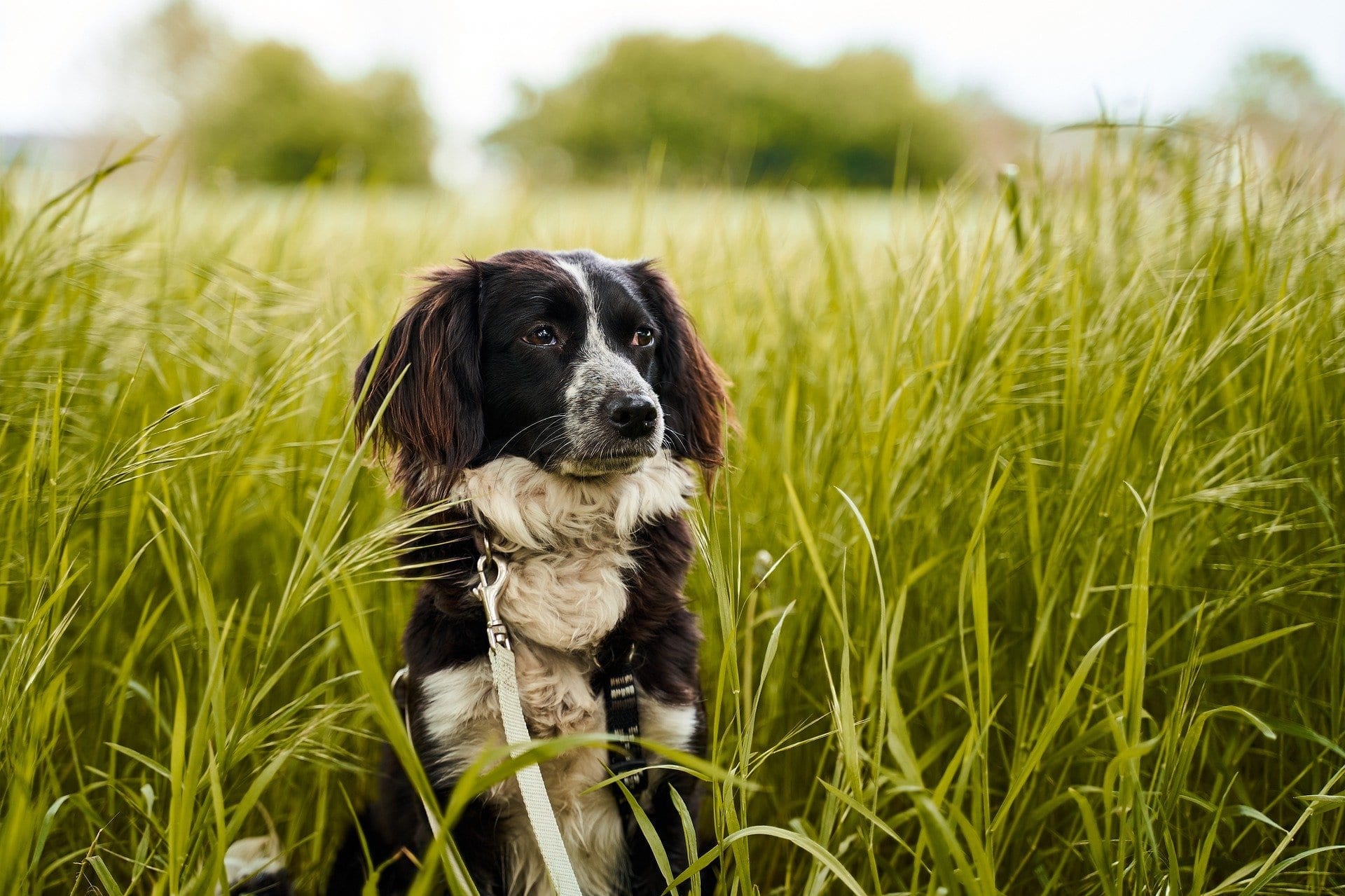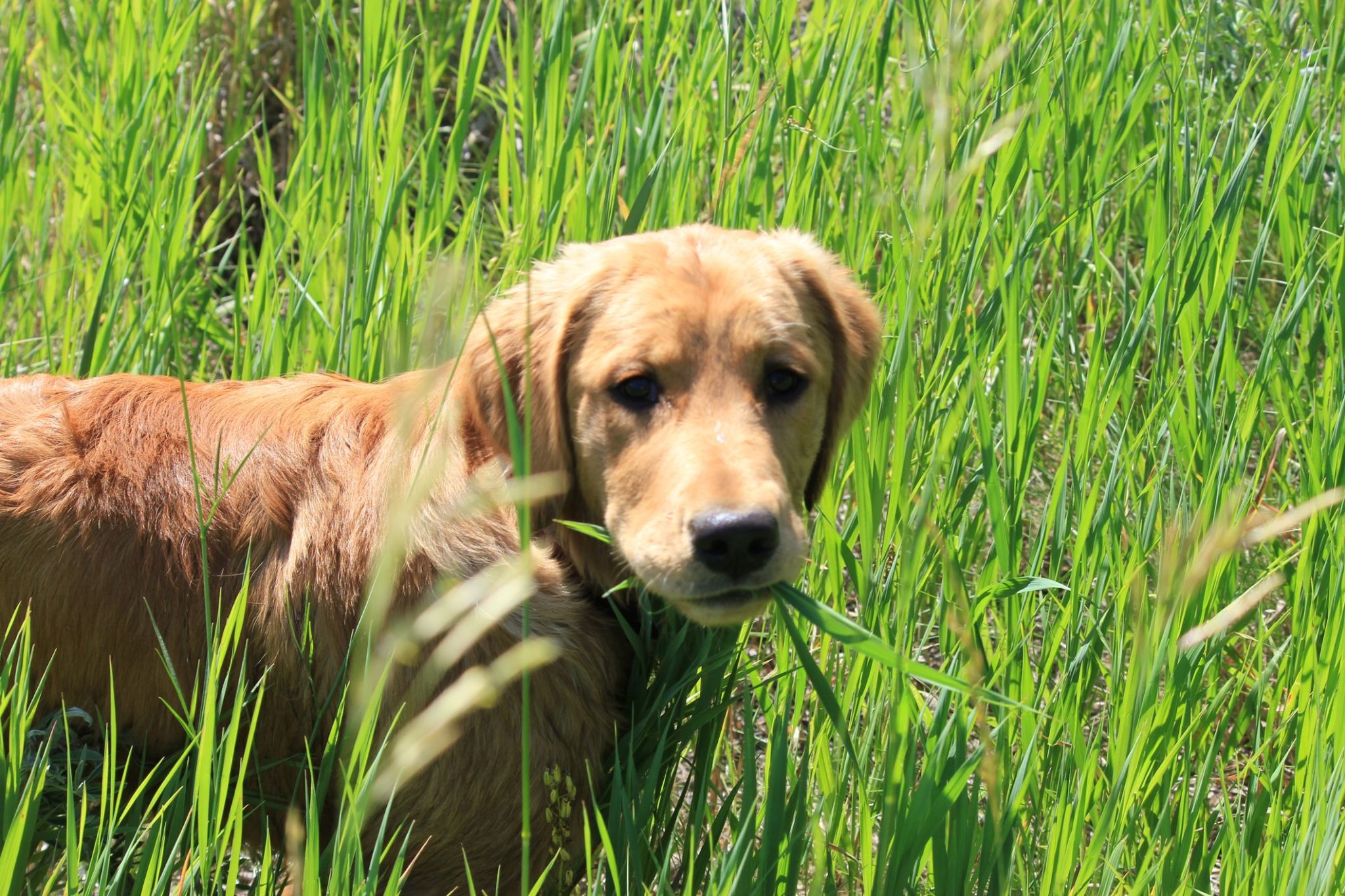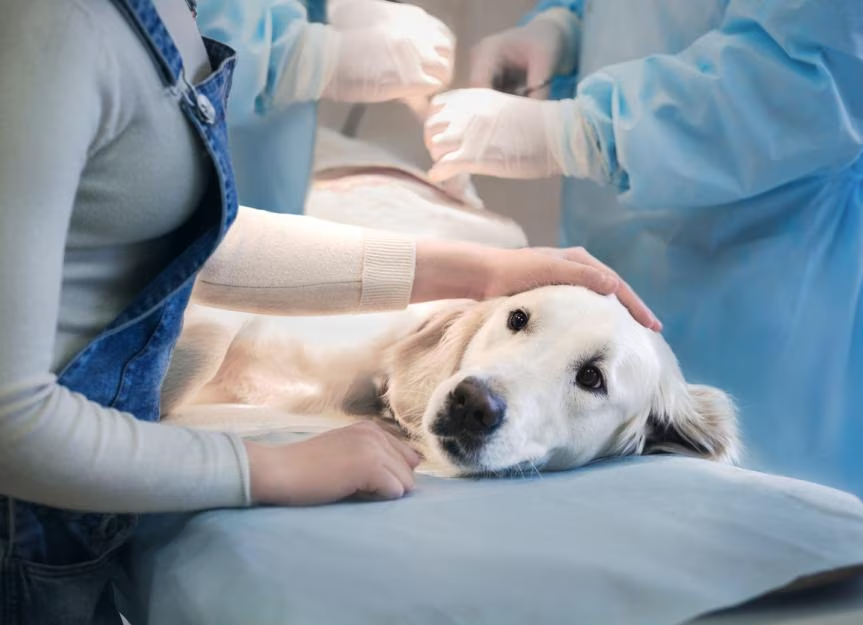Prevalence of Grass Grazing
You’re not alone in your battle against your dog gobbling grass. Surveys reveal over two-thirds of dogs readily indulge in leafy greens regularly. Despite us shoveling gourmet kibble into their bowls, the verdant lawn remains an irresistible salad bar for many canines. But why do dogs eat grass, and how can owners control this turf-chewing habit? Let’s dig into the science behind dogs getting their greens.
Proposed Motivations
Explanations for plant grazing include:
- Seeking more fiber or nutrients missing from diet
- Alleviating gastrointestinal upset or nausea
- Inducing vomiting to relieve stomach irritation
- Satisfying innate foraging instincts
- Play or exploratory chewing behavior
- Attention-seeking from owners
The true impetus likely combines several motivators.

Risks of Foliage Feasting
While most grass nibbling is harmless, dangers include:
- Upset stomach, vomiting, diarrhea
- Parasites from contaminated soil, feces
- Lawn chemicals, toxic plants, debris
- Blockages and accidents from eating longer grass
- Destruction of landscaping from obsessive grazing
Monitoring intake and discouraging excessive eating protects dogs’ health. Provide irresistible alternatives.
When to Seek Veterinary Care
Contact your vet if grass eating leads to:
- Frequent vomiting or diarrhea
- Loss of appetite, lethargy, or depression
- Signs of intestinal obstruction
- Known ingestion of toxic plants, mushrooms, chemicals
- Weight loss or failure to thrive
sudden grass fixation signals underlying illness merits examination.
Achieving Gastrointestinal Greenery Peace
While seldom serious, controlling canine salad connoisseurs brings household harmony. Understand what drives the grass snacking and mitigate those triggers. A fenced garden of approved greens can satisfy cravings safely. With patience and precaution, your dog’s gastric greenery hankerings no longer wreak digestive havoc.

Preventative Measures
To curb grass grazing, try these tactics:
- Use bitter anti-chew sprays on favorite snacking spots
- Distract and redirect to chew toys when caught in the act
- Fit your dog with a basket muzzle outside if needed
- Avoid rewarding by chasing or giving attention
- Ensure adequate exercise, mental stimulation, and play
- Rule out medical causes like parasite infections
- Grow approved pet grass varieties in a dog-safe garden area
An ounce of prevention goes a long way to combat this common canine obsession!
Dietary Alterations to Try
Make sure your dog’s diet provides:
- Plenty of fiber from whole grains, fruits, and vegetables
- Probiotics to support healthy digestion and gut flora
- Prebiotics like chicory root or pumpkin to nourish probiotics
- Digestive enzymes to improve food breakdown
- Limited grain-free proteins and reduced fat to ease stomach upset
Consult your vet about tailoring nutrition to ease grass cravings.
Training an Alternative Behavior
Train your dog to perform a substitute behavior when they begin seeking grass. For example, teach a “go chew toy” or “let’s play” cue. Reward them for redirecting onto the appropriate object. Use a leash if needed initially. Positive reinforcement makes good habits stick.
Embracing Your Dog’s Nature
While frustrating, occasional grass grazing is simply a natural canine behavior. With patience, prevention and training, balance can be achieved to keep your dog satisfied and your lawn in line. Stay alert yet accept occasional nibbling by understanding what compels those urgent green cravings.



